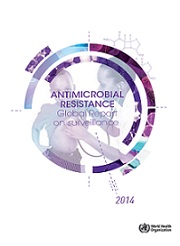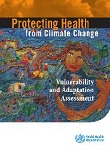World malaria report 2023
<p>India topped countries in the South-East Asia region for the most number of malaria cases and deaths in 2022, according to this report published by the World Health Organization (WHO).</p>
<p>India topped countries in the South-East Asia region for the most number of malaria cases and deaths in 2022, according to this report published by the World Health Organization (WHO).</p>

Since 1990, almost 2 billion people globally have gained access to improved sanitation and 2.3 billion have gained access to drinking-water from improved sources. Some 1.6 billion of these people have
<p>Air quality in most cities worldwide that monitor outdoor (ambient) air pollution fails to meet WHO guidelines for safe levels, putting people at additional risk of respiratory disease and other health problems finds this 2014 version of the urban air quality database released by WHO which covers 1600 cities across 91 countries.</p>
Millennium Development Goal (MDG) 5 Target 5A calls for the reduction of maternal mortality ratio by three quarters between 1990 and 2015. It has been a challenge to assess the extent of progress due to

The first global report by WHO on antimicrobial resistance finds that the problem is no longer just a serious prediction for the future, but is happening now.
On World Malaria Day (25 April), WHO is launching a manual to help countries to assess the technical, operational and financial feasibility of moving towards malaria elimination. WHO’s new guide, "From
Ebola virus disease (formerly known as Ebola haemorrhagic fever) is a severe, often fatal illness, with a death rate of up to 90%. The illness affects humans and nonhuman primates (monkeys, gorillas, and
This is the second edition of WHO guidelines for national tuberculosis programmes on the management of tuberculosis in children. Like the first edition published in 2006 this document is targeted at national TB programmes, paediatricians and other health workers in low- and middle-income countries; it does not aim to outline recommendations for high-income countries with low TB prevalence.
<p>WHO estimates that around 7 million people died in 2012 - 1 in 8 of total global deaths – as a result of air pollution exposure. The estimates confirm that air pollution is now the world’s largest single environmental health risk. The new data reveal a stronger link between both indoor and outdoor air pollution exposure and cardiovascular diseases, such as strokes and ischaemic heart disease, as well as between air pollution and cancer.</p>
<p>These new estimates released by WHO confirm that air pollution is now the world’s largest single environmental health risks and show a stronger link between both indoor and outdoor air pollution exposure and cardiovascular diseases, such as strokes and ischaemic heart disease, as well as between air pollution and cancer.</p>

This document is designed to provide basic and flexible guidance on conducting a national or subnational assessment of current and future vulnerability (i.e. the susceptibility of a population or region